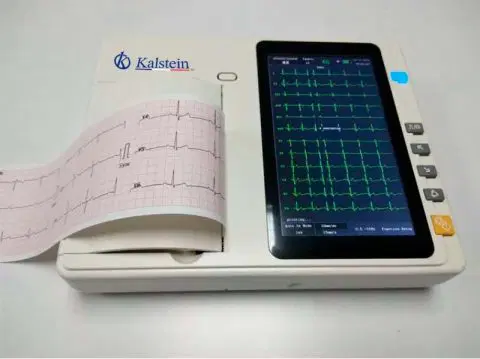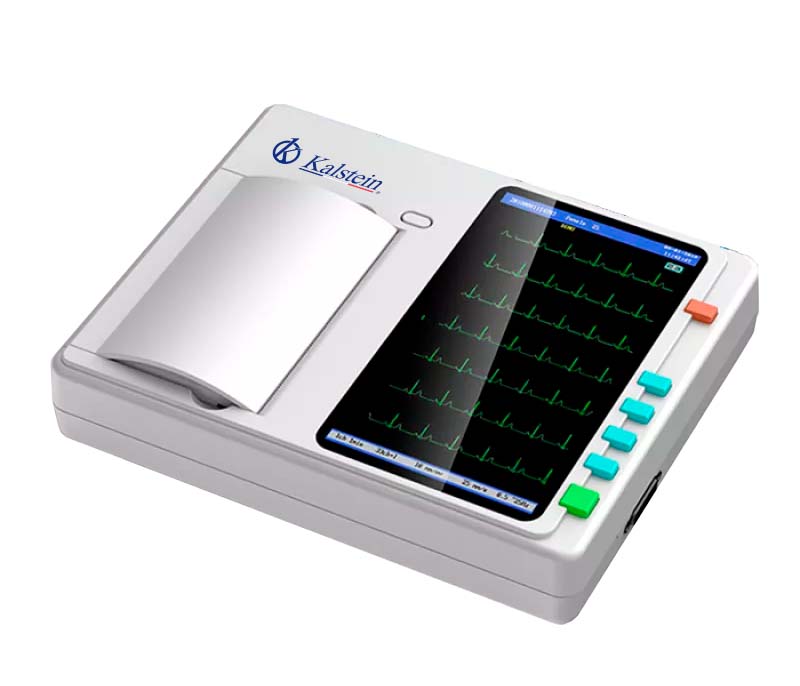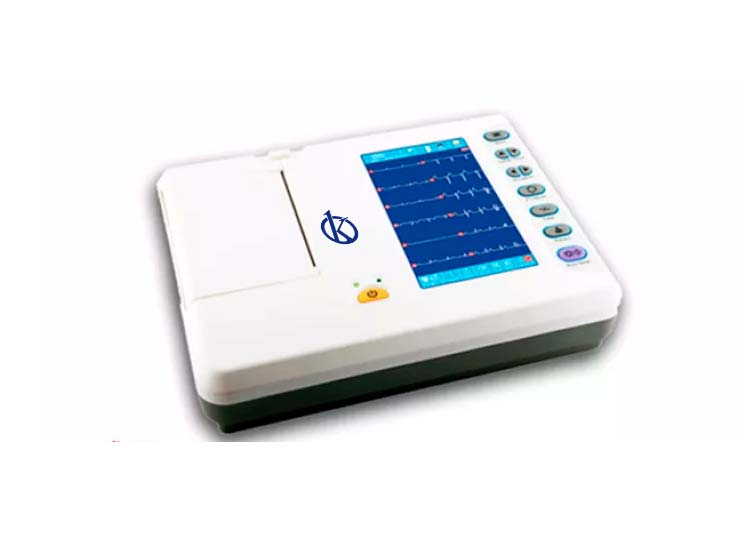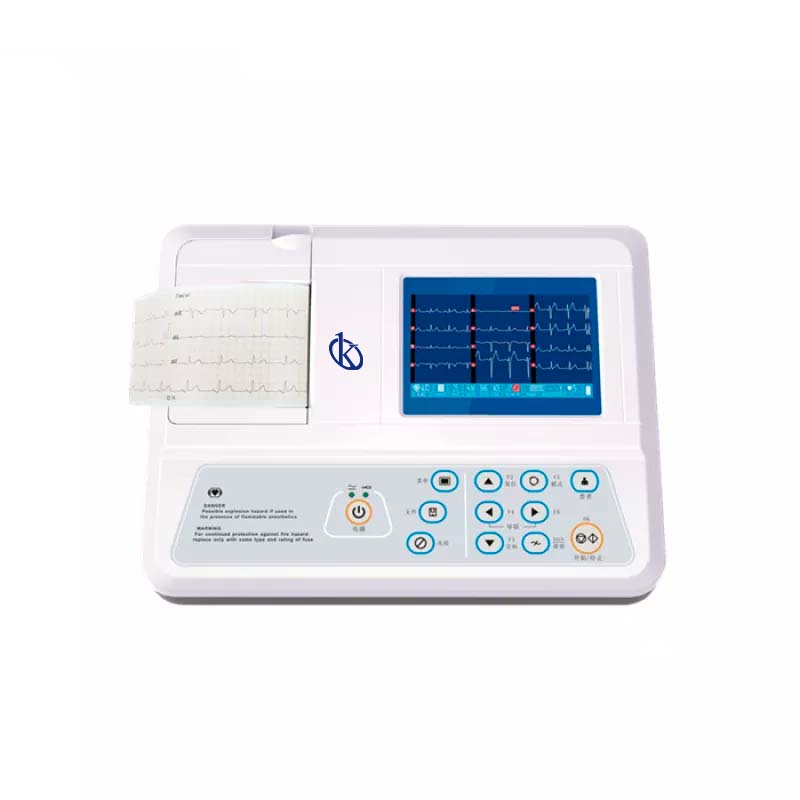ECG-Digital Electrocardiograph
An electrocardiograph is a medical equipment for clinical diagnosis, which is responsible for capturing and amplifying the electrical activity of the patient's heart through the use of electrodes. The recording of this activity is called an electrocardiogram (ECG), which is defined as the continuous recording of the heart's electrical impulses, and is commonly used by physicians to determine any damage to the heart, whether there are abnormal heart palpitations, the size and position of the heart chambers, and the effects of drugs or devices used to control the heart (such as pacemakers).
This medical device is part of a science called bioinstrumentation, a branch of biomedical engineering. This is responsible for retrieving specific biosignals from the human body and then processing them in such a way that physicians can interpret them to obtain a diagnosis of the patient in the least invasive way possible.

Types of ECG-Digital Electrocardiograph a laboratory may require

YR05159 12 Channel 12 Lead 6 Channel Medical Ecg Machine
The 12-channel ECG machine is an electrocardiograph that can collect 12-lead ECG signals simultaneously...

YR05158 12 Channel Electrocardiograph Touch Screen ECG Machine
As the name suggests, the 3-channel ECG machine prints 3 waveforms...

6 Channel Smart Hospital ECG Manufacturing Machine Monitoring Dynamic Holter ECG Systems YR05161
This new 6-channel YR ECG will bring you ...

12-Lead ECG monitor USB / RS232 interface YR05160
The 12-channel ECG machine is an electrocardiograph that can collect 12-lead ECG signals simultaneously ...
Our best selling ECG-Digital Electrocardiograph
The 12-channel ECG machine is an electrocardiograph that can collect 12-lead ECG signals simultaneously and print ECG waveforms with thermal printing system. The EKG is commonly used to detect abnormal heart rhythms and to investigate the cause of chest pains. An EKG records the electrical activity of the heart. The heart produces small electrical impulses that travel through the heart muscle to cause the heart to contract. These impulses can be detected by the ECG machine.
| Model | YR05160 |
| Guide | 12 standard conductors |
| Calibration voltage | : 1mV ± 2% |
| Voltage tolerance | ≥ ± 500mV |
| Constant time | ≥3.2s |
| Frequent response | 0.05 ~ 160Hz (-3db) |
| Noise level | <15μVp-p |
| Sensitivity valve | ≤20μV |
| Sensitivity | 2.5, 5, 10, 20mm / mV |
| Interchannel interference | ≤0.5mm |
| Paper speed | 6.25, 12.5, 25, 50mm / s (± 3%) |
| Input dynamic range | ± 10Vpp |
| Filter: AC Filter | 50Hz / 60Hz |

Catalog of available Digital ECG models
Guidelines for becoming an expert in digital Electrocardiography ECG
What is an electrocardiogram?
The electrocardiogram (ECG) is a recording that reflects the electrical activity of the heart, made with the help of...
Electrocardiographs: How do they work?
At some point you’ve probably wondered how an electrocardiograph works? This medical device is part of...
Vascular diseases : Electrocardiograph?
Early diagnostic tests for heart disease can detect pathologies before symptoms occur and make the disease treatable...
Use of the electrocardiograph to detect acute myocardial infarction
It is death of a portion of the heart muscle that results from acute blockage of a coronary artery. As its name defines it, it is a “heart attack” because it is a necrosis due to lack of blood and nutrients for too long (about 20 minutes), “acute” because it usually...

Questions frequently asked by our customers about the digital ECG Electrocardiographs
How to know the prices of digital ECG Electrocardiographs?
To know the price of the Digital Electrocardiograph ECG, we invite you to send us an email with your request using the contact form.
What are the delivery times for digital ECG Electrocardiographs?
- If the equipment of your interest is in stock or if it must be manufactured.
- The type of freight you have chosen, this may be; air or sea.
How to buy the ECG-Digital Electrocardiograph?
- By email: [email protected]
- By telephone: +33 (0) 1 78 95 87 02
- E-commerce: Via Kalstein's official website in your country.
How does the warranty work?
Can I request a quote online?
Of course, you can request a quote for the Kalstein team of your interest, directly from our official website. Once you have identified your preferred model, click HERE




